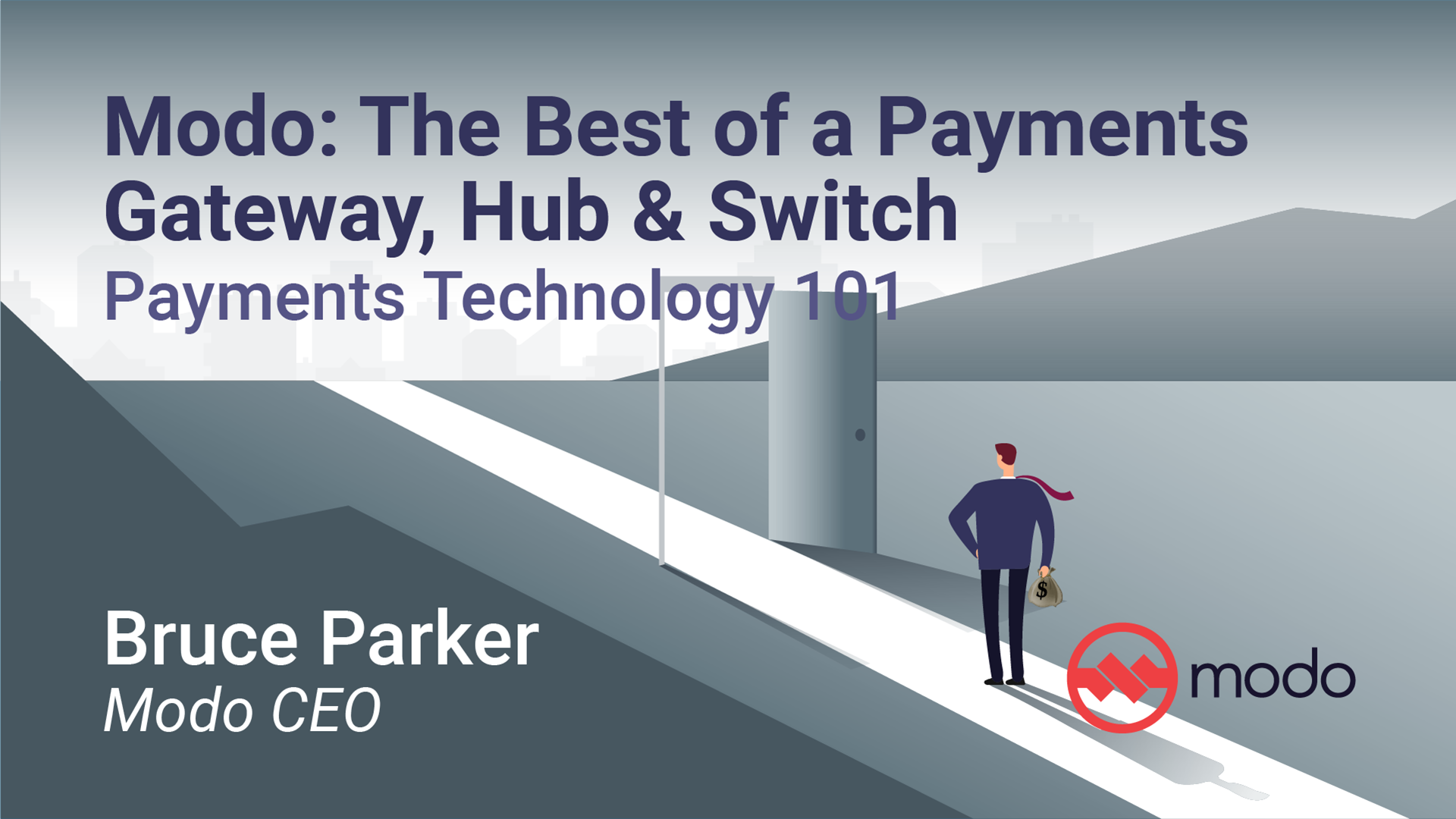Modo CEO, Bruce Parker, explains how Modo combines the features of a gateway, hub, and switch to create a payments orchestration platform that gives enterprises quick and easy access to payment services around the globe.
What is Modo?
Modo is a bank-grade, cloud-native payments stack. We built it in the cloud precisely to take advantage of all the scaling, reliability, security, and all the other features that are available in today’s modern cloud. We’ve sold that to (and the reason we describe it as bank-grade) a number of leading banks around the world as well as large financial technology companies, processors, and payment service providers, including providers of various payment methods. That is what we’re offering now today to large organizations, typically enterprises, who are looking to take their own payments infrastructure over, but don’t want the complexity of having to build that software themselves. We offer it as a service that allows folks to get the benefit of a ground-up complete payments stack running in the cloud, securely, safely, soundly, for whatever payment service that they may choose to use.
We believe that Modo is a unique offering in the marketplace in that it’s a modern, built from the ground up in the cloud, payments infrastructure using all of the latest and greatest technologies, using the best in class security but that is also available for others to use. It’s offered in the cloud as SaaS precisely so that other people can have the benefits of a world class payments stack, or as we like to say, a bank-grade payments stack.
Probably the best way to think about Modo’s payment stack, with respect to things that have gone before, is a combination of a gateway, a hub, and a switch. It’s a gateway in the sense that we provide connections to any payment service provider anywhere on the planet. It’s a hub in the sense that you can do any payment method. It doesn’t matter whether it’s a card, it’s a wallet, it’s a bank account, it’s something a little bit more esoteric than that or it’s something that you own and control and only exists inside your organization - loyalty points are sometimes a good example of that. Last, it’s a switch. You can move between those payment services, you can combine those payment services, you can use them in new and interesting ways from a payment flow perspective. It’s entirely up to you. So the payments stack that we provide gives you the control and the ability to manage your payments any way that you want.
How is Modo like a payments gateway?
Modo is like a payments gateway in the sense that we also aggregate connections. Through one interface to Modo, through one API, you can gain access to payment services provided all around the world, many different types, including various payment methods. In many ways Modo is more than just a payments gateway precisely because it enables many different payment methods - that’s typically something that you think of as a hub - and also enables routing between those - which is typically something you think of a payment switch providing. In fact, a gateway may or may not have some routing capabilities, it may or may not support different kinds of payment methods, but at the end of day, Modo also enables you to choose the payment services that you want. It doesn’t really matter whether or not we’ve ever integrated it before so unlike a payments gateway, we can simply add connections to your environment to our payments stack whenever you like.
What is the value of combining a gateway, hub, and switch?
The value of having a platform that has the abilities of a gateway, a hub, and a switch is that you have the maximum amount of flexibility. You have all of the connectors, all of the connections that you need to whatever payment services that you happen to want, you have the ability to deal with payments that may be very different from one another and to be able to combine those into an experience - for instance, a credit card and loyalty associated with another account or perhaps even associated with that same credit card. And then finally you’re able to move between different payment service providers so that you get the best deal and/or you’re providing the best service in the right country. Oftentimes, even if we are thinking in terms of card transactions, one processor might be better suited in the United States, for instance, and a different processor might be a better bet in Brazil.
When considering whether or not it’s a good idea for you to take on the challenge of your own payments stack, a couple things to keep in mind: If you’re the kind of organization that ended up building your own payments stack because of competitive pressures or the growth of your business or the sheer complexity of what you’re trying to accomplish from a payments perspective, keep in mind that you’re probably solving one problem at a time. In fact, you likely started off focused on cards, you might’ve started adding a few other payments methods, and then realized you really could optimize that experience by connecting to more and more competitive payment service providers even for the same kind of payment. Consider that starting from the ground-up, in the cloud, with a bank-grade model means that we can actually help accelerate you even if you’ve spent a long time working on that yourself. But if you haven’t, if you’re just now thinking about going down this journey, we can get you there faster even than if you’d started many years ago. So whether or not you’re already in the game and whether or not you’re considering joining the game, please call us. We’d be delighted to help you.
Watch other related videos
